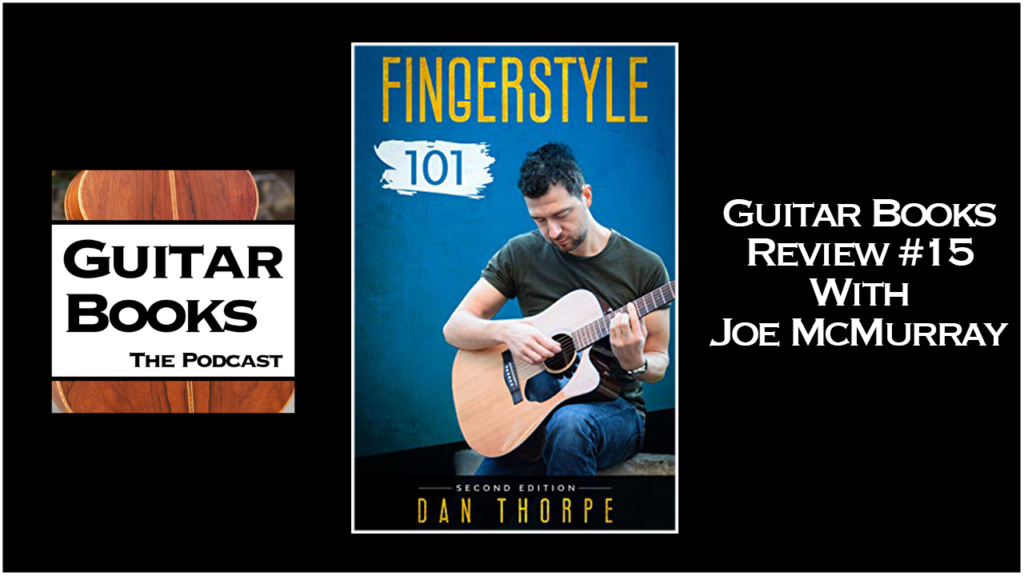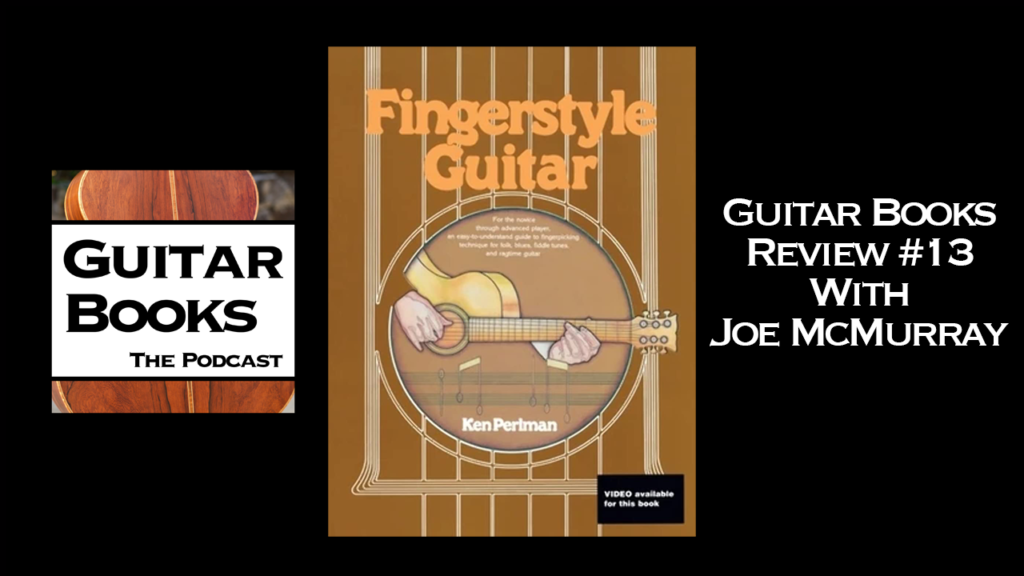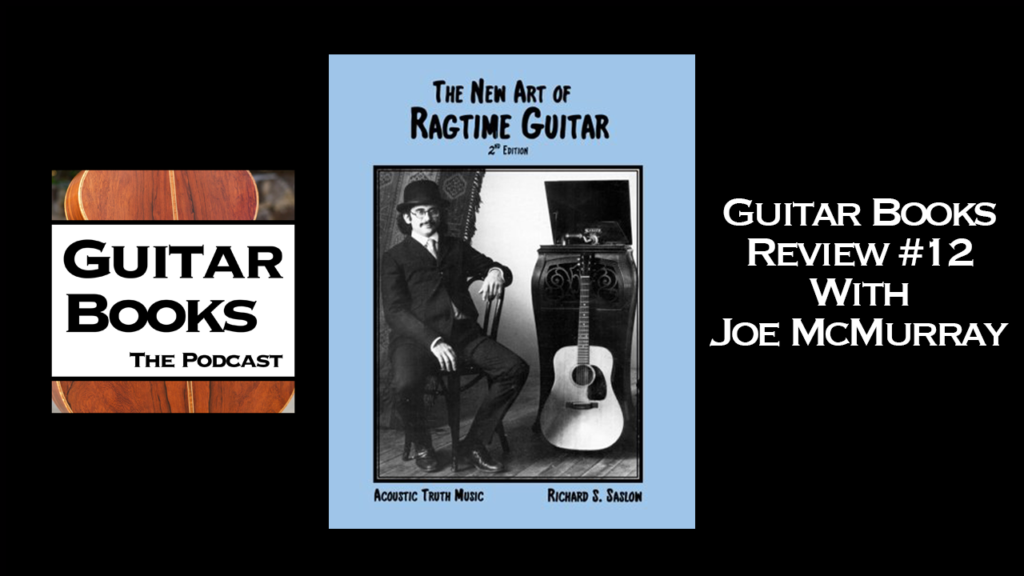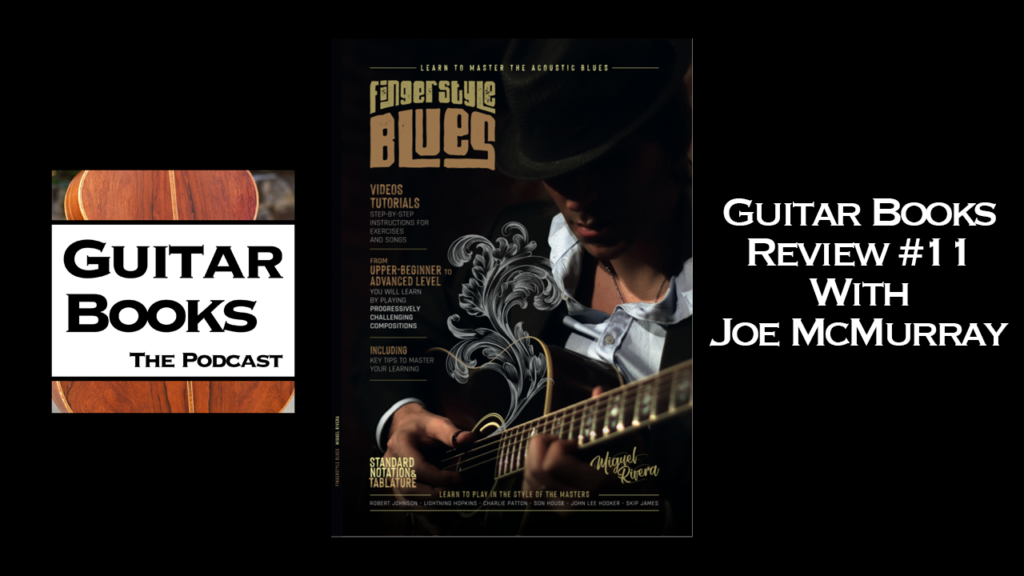Podcast: Play in new window | Download (Duration: 27:47 — 38.3MB) | Embed
Subscribe: Apple Podcasts | RSS | More
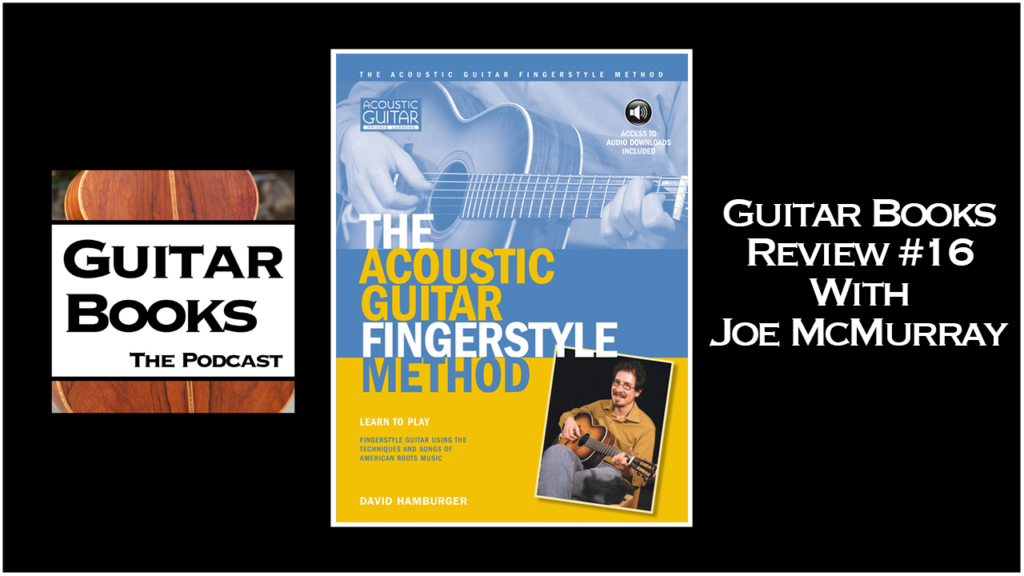
Is this one of the best or worst method books for acoustic fingerstyle guitar?
You can learn to play music by simultaneously using a variety of resources including teachers, online resources, and books.
David Hamburger’s The Acoustic Guitar Fingerstyle Method is a method book for learning to play solo fingerstyle (or “fingerpicking”) guitar in the American roots styles (folk, blues, ragtime, early jazz, marches). The book becomes progressively more difficult – the early sections of the book are appropriate for beginner fingerstyle players who have some experience with open chords and the later sections of the book are more suitable for intermediate players. Advanced players may still find some useful information, inspiration, or fun repertoire tunes. This is a well-thought-out book with a great progression of information and fun arrangements of tunes.
The book focuses on alternating bass (Travis picking) arrangements and steady bass arrangements (monotonic bass, walking bass, etc.). There are also brief chapters on Drop D and open D tuning. The material flows in a sensible progression from chapter to chapter as you build skills and knowledge. Each chapter includes text and playing examples that directly prepare you for a 1-2 page tune that showcases the techniques or concepts being taught. The arrangements of the tunes are really nice (they sound good and are playable), although don’t usually include any fingering (there is picking hand fingering notated in the examples, but not the full tunes). The tunes are stylistically similar to those found in Stefan Grossman’s “Complete Country Blues Guitar Book” and Mel Bay’s “Complete Chet Atkins Guitar Method” although with a very different teaching approach.
The book covers a lot of ground in only 74 pages – from beginning Travis Picking to steady bass blues to harmonized walking bass lines to alternate tunings, etc. While the examples and tunes are of high quality, there aren’t that many examples for each topic, so you won’t get that deep of an understanding of how to apply some concepts to different situations. One example of this is playing walking bass lines under your melody- you’ll play a few tunes that include this, but you won’t really learn how to build your own walking bass lines so that you can apply them to your own arrangements or compositions. However, by the end of the book, you will have a firm grasp of the general approaches of playing using an alternating bass (Travis Picking) or a steady bass.
There is not a lot of music theory in the book. This may appeal to some readers. However, it adds to the issue that you may not be able to apply a concept like walking bass lines to other situations.
The text is descriptive and helpful. However, I don’t like how the publisher places the text as a continuous block at the top of the page with the examples clumped together at the bottom of the page. Harder for my eyes to jump back and forth.
The author includes great listening recommendations that are relevant to the tunes and topics at hand.
The included audio (2 CDs) provides all examples and tunes played at full speed and slowed down. The guitar playing is clean and the recording quality is high.
All playing examples are provided in standard notation (treble clef) and tablature.
You could use either a steel string acoustic or nylon string classical guitar to work through this book. You shouldn’t need to fret any bass notes using your thumb over the top.
Published by String Letter Publishing (publisher of Acoustic Guitar Magazine) © 2007. Distributed by Hal Leonard.
My eBook: Arranging for Fingerstyle Guitar: go to http://joemcmurray.com/checkout/ to purchase a pdf of my eBook.
My music is available on all streaming platforms:
Pins on the Map: my third fingerstyle guitar album was released on January 19, 2024. Watch the first single, “Open Road,” on YouTube here: https://youtu.be/uPBh8sZQsT4?si=EM_wAwnHFqU1VC9C.
Riding the Wave and Acoustic Oasis: my first two fingerstyle guitar albums.
